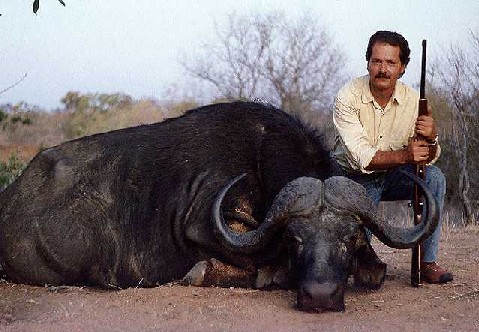The African buffalo is a
very robust species. Its shoulder height can range from 1 to 1.7 m
(3.3 to 5.6 ft) and its head-and-body length can range from 1.7 to
3.4 m (5.6 to 11 ft).
The tail can range from
70 to 110 cm (28 to 43 in) long. Savannah type buffaloes weigh 500
to 910 kg (1,100 to 2,000 lb), with males, normally larger than
females, reaching the upper weight range.
A record-sized
savannah-type male weighed 1,000 kg (2,200 lb).Forest
type buffaloes, at 250 to 455 kg (550 to 1,000 lb), are only
half that size.
Its head is carried low,
its top located below the backline. The front hooves of the buffalo
are wider than the rear, which is associated with the need to
support the weight of the front part of the body,
which is more powerful
than the back Savannah type buffalo have black or dark brown coats
with age.
Old bulls have whitish
circles around their eyes. Females tend to have more reddish coats.
Forest type buffalo are reddish brown in colour with horns that
curve out backwards and upwards.
Calves of both types have
red coats.
The horns of African
buffalo are very peculiar. A characteristic feature of them is the
fact that the adult bull's horns have fused bases, forming a
continuous bone shield referred to as a "boss," which can not always
be penetrated even by a rifle bullet. From the base the horns
diverge, then bend down, and then smoothly curve upwards and
outwards. The distance between the ends of the horns of large bulls
is more than a metre.
The young buffalo horn
boss forms fully only upon reaching the age of 5–6 years. In cows
the horns are, on average, 10-20% less, and the boss is less
prominent. Forest buffalo horns are much smaller and weaker than
those of the savannah buffaloes and are almost never fused. They
rarely reach a length of even 40 cm.


